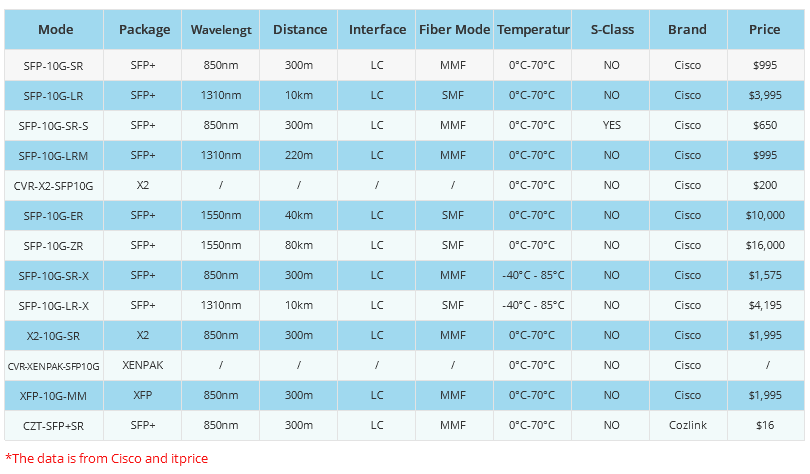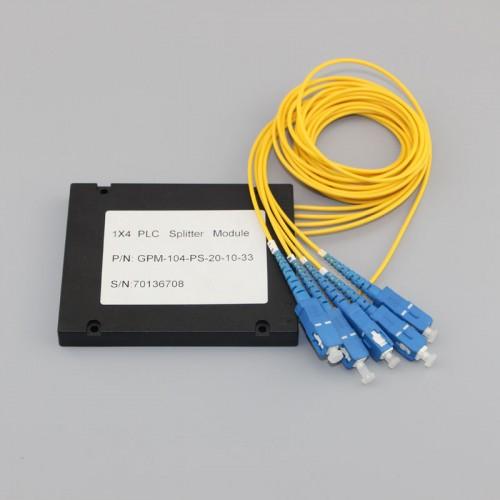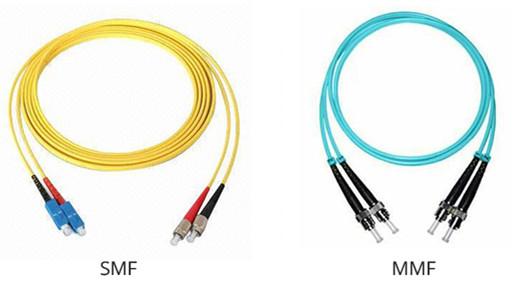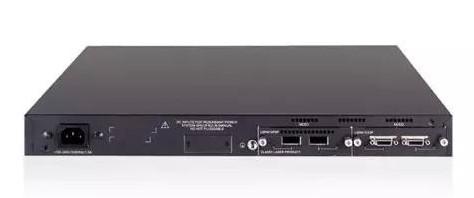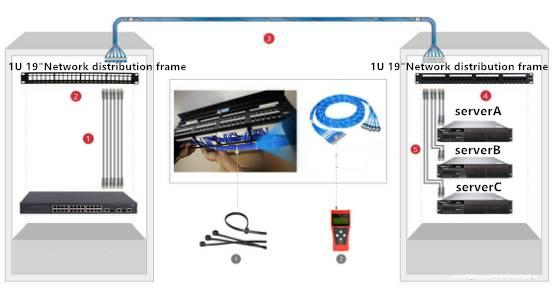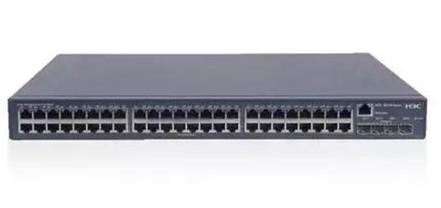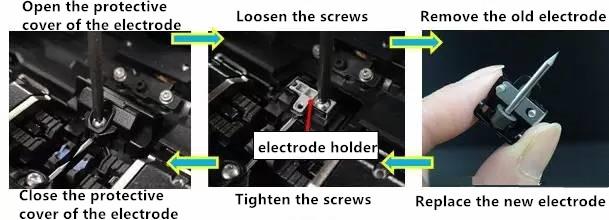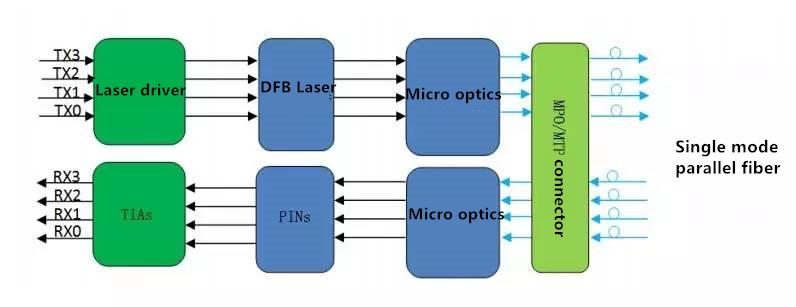- Related articles
- Buy Cisco GLC-SX-MM SFP For Fiber Optic Networks
- What Does LC Stand for in Fiber?
- Optical Transceivers for Cisco WS-C2960XR-48FPS-I Switch
- Optical Transceivers for Cisco SG300-52P-K9-UK Switch
- What Is GYTS Fiber Optic Cable?
- Optical Transceivers for Cisco SG550XG-8F8T-K9-UK Switch
- Cisco Catalyst 6500 WS-X6816-GBIC Expansion Module 16-Port Gigabit Ethernet
- All Cisco ONS-SI-155-L1's information (List price, Specs, Datasheet PDF, Compatibility mat
- Optical Transceivers for Cisco WS-C3650-24PS-L Switch
- The difference between CSFP and SFP
Recommend tag
Upgrading from 10G network to 40G network: How to convert QSFP+ports to SFP+ports?
2024-11-15
With the emergence of 40G Ethernet, many enterprise users are starting to consider seamlessly migrating to 40G networks while fully utilizing existing 10G network infrastructure. Specifically, it is about how to use 40G switches with QSFP ports with existing 10G devices with SFP ports, such as switches and servers.. In this article, we will share three common solutions and teach you how to directly convert QSFP ports to SFP ports during the process of upgrading from a 10G network to a 40G network..
Solution 1: 40G QSFP+Branch Cable
The first method to directly convert QSFP+to SFP+ports is to use 40G QSFP+branch cables, including DAC high-speed cables and AOC active optical cables. In most cases, these two types are connected at one end to a 40G QSFP+optical module and at the other end to four 10G SFP+optical modules, thus becoming a 40G QSFP+to 10G SFP+branch cable. In addition, there is another type of AOC active fiber optic cable branch cable, which is a 40G QSFP+to 4 LC duplex AOC active fiber optic cables, with one end being QSFP+and the other end being duplex LC fiber optic jumpers. When additional 10G SFP+optical modules are added for use, QSFP+to SFP+conversion can also be achieved.As shown in the figure below, whether choosing DAC high-speed branch cables or AOC active branch cables, these 40G QSFP+branch cables can divide 40G into 4x10G links by connecting one end to the QSFP+switch port and the other end to multiple 10G devices with SFP+(no more than 4).

Figure 1: Implementing QSFP+to SFP conversion through QSFP+branch cables+
Option 2: MTP/MPO to LC branch jumper
The second method to convert QSFP+to SFP+ports is to use MTP/MPO to LC branch jumpers. This scheme is similar to the one mentioned earlier, but without pre connected optical modules at both ends. One end of an 8-core MTP/MPO is an MTP/MPO connector, and the other end is usually equipped with four LC duplex connectors. To achieve the conversion from 40G to 10G, it is necessary to equip each MTP/MPO to LC branch jumper with a 40G QSFP+optical module with MTP/MPO interface and four 10G SFP+modules with duplex LC interface. As shown in the figure below, connect the jumper to the corresponding 10G optical module and 40G optical module, and then insert the module into the matching QSFP+port or SFP+port to achieve conversion.
Figure 2: Implementing QSFP+to SFP conversion through MTP/MPO to LC branch jumper+
Option 3: CVR-QSFP-SFP10G QSA Conversion Module
Another method to directly convert QSFP+to SFP+ports is through the 10G converter CVR-QSFP-SFP10G. The QSFP+to SFP+converter features a QSFP+package with an SFP+optical module slot inside, allowing devices with 40G QSFP+ports and 10G SFP+ports to seamlessly connect. By inserting the SFP+optical module into the QSFP+to SFP+converter and connecting the converter to the QSFP+port, a 40G-10G connection can be achieved. The QSFP+to SFP+converter serves as the interface for the SFP+optical module in the link.
Figure 3: Implementing QSFP+to SFP Conversion through CVR-QSFP-SFP10G QSA Converter+
Which QSFP+to SFP+conversion scheme should I choose?
The previous text provided three direct connection methods for converting QSFP+to SFP+ports. However, in actual data centers or other high-density cabling applications, network upgrade is a complex process, and sometimes cross connections can also be considered. The specific choice of method also needs to consider the following factors comprehensively.Transmission distance
When converting QSFP+interface to SFP+interface, it is necessary to first clarify the transmission distance, and then select the appropriate optical module and connection method based on this distance. As shown in Figure 4, in the cross connection scheme, a combination of 40G MTP/MPO backbone fiber jumpers and 8-core jumpers is usually used, which is more suitable for long-distance transmission. Even in the case of direct connection, QSFP+to 4SFP+AOC/DAC jumpers have certain limitations in short distance transmission compared to the other two types.
Figure 4: Implementing QSFP+to SFP conversion through cross connection+
Transmission medium
Although fiber optic jumpers are becoming increasingly popular, in some cases, copper wires are still used for 40G-10G network transmission, but only for short distances within a few meters. Due to the fact that copper wire is much cheaper than fiber optic, QSFP+to SFP+port copper wire solutions such as DAC QSFP+branch cables can be chosen for short distance transmission.Network density
In high-density network environments, connections between 40G and 10G require a lot of QSFP+ports and SFP+ports. Compared with QSFP+to SFP+QSA converters and other interconnection methods, QSFP+branch cables with pre terminated optical modules are more space saving and simplify network maintenance.Cost
Cost is one of the important factors determining a plan, and it is necessary to select the most cost-effective plan based on a comprehensive consideration of the above factors. For example, if a 7-meter 10G to 40G network link needs to be connected, a 40G QSFP+to 4x10G SFP+DAC high-speed cable with pre terminated 40G QSFP+optical modules and four 10G SFP+optical modules is more cost-effective than other solutions.Conclusion
In the future, networks will develop towards higher speeds, and enterprises and data centers will make full use of existing network equipment to build high-speed networks. The interconnection of low-speed and high-speed devices is also a future trend. For example, the conversion of QSFP+ports to SFP+ports mentioned in this article is a great solution that brings better improvements to the network.
TECHNICAL SUPPORT
Get solutions or consultation from the technical team.




























































